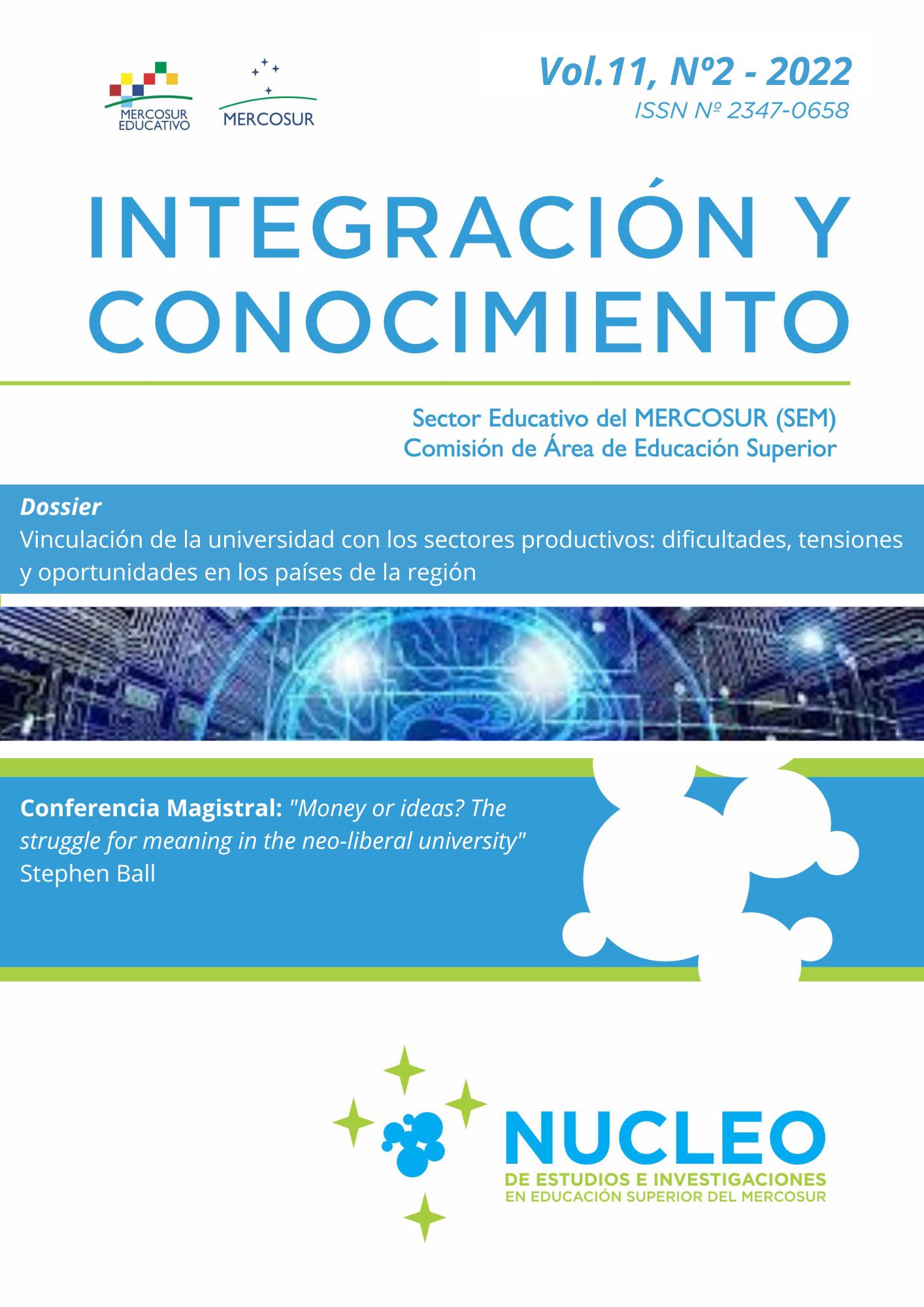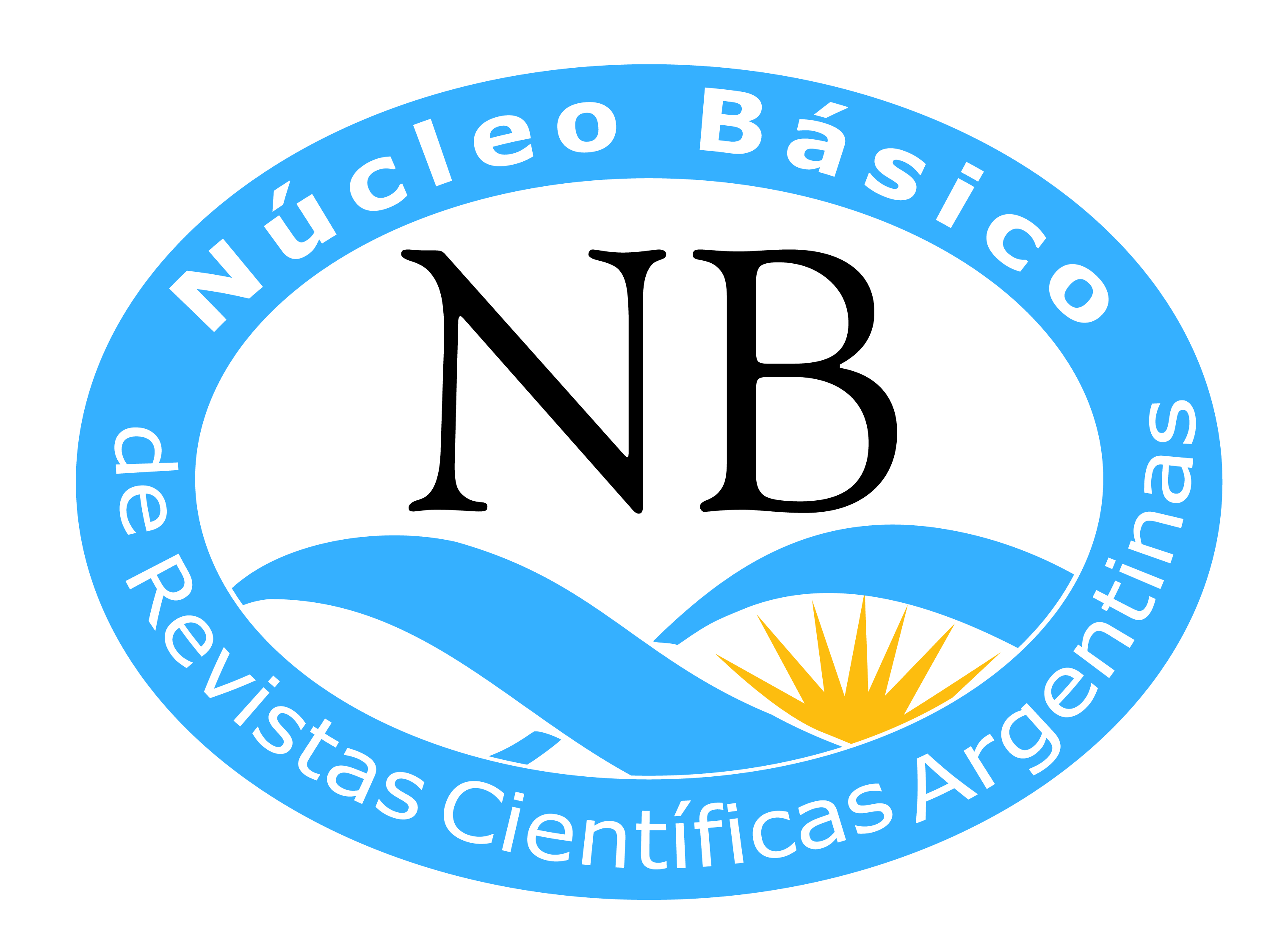Three elements to think critically about outreach policies: analyzing the case of university business incubators
DOI:
https://doi.org/10.61203/2347-0658.v11.n2.38431Keywords:
academy-industry collaboration, university third mission, intermediary organizations, business incubatorsAbstract
Collaboration between industry and university has been postulated as the panacea for regional development. Both academics and politicians have devoted countless resources to justify and demonstrate the need for this intersectoral work. However, the evidence in Argentine still shows an industry that does not identify when links with university are possible, and also, a university that does not find relevant and sustainable mechanisms to share its capital with other sectors of the economy. This paper argues that there are three analytical elements of linkages on which decision-makers should work in depth to increase the probability of successful collaborations. The elements considered are: a) the clear identification of objectives pursued by the initiative; b) the role attributed to the policy implementation mechanisms; c) the evaluation tools used to monitor the initiatives. To address this problem, the case of university business incubators is specifically analyzed. They are understood as a mechanism boost by universities to improve collaborations with industry. The analytical elements are applied considering argentine environment. The analyze of each element shows how a deficient implementation of the initiatives has a negative impact on the credibility and legitimacy of involved institutions
Downloads
References
Bourdieu, P. (2008). Homo academicus. Buenos Aires, Argentina: Siglo XXI Editores.
Chesbrough, H., y Crowther, A. K. (2006). Beyond high tech: early adopters of open innovation in
other industries. R and D Management, 36(3), 229–236. Recuperado de
https://doi.org/10.1111/j.1467-9310.2006.00428.x
Clark, B. (2001). Places of Inquiry: Research and Advanced Education in Modern Universities.
Comparative Social Research, 19, 215–218. Recuperado de
https://www.emerald.com/insight/content/doi/10.1016/S0195-6310(00)80025-
3/full/html
Davenport, T. H., De Long, D. W., y Beers, M. C. (1998). Successful Knowledge. Management
Projects. Sloan Management Review, 39(2), 43 – 57.
Etzkowitz, H., de Mello, J. M. C., y Almeida, M. (2005). Towards “meta-innovation” in Brazil: The
evolution of the incubator and the emergence of a triple helix. Research Policy, 34(4), 411–424.
Recuperado: https://www.sciencedirect.com/science/article/abs/pii/S004873330500034X
Gómez J. (2020). Beneficios hacia los investigadores y grupos de I+D. En C. González, E. Velazco,
J. Gómez y M. González. (1ra Ed.), Beneficios de la Ley de Promoción y Fomento de la Innovación
Tecnológica y su historia a 30 años de su sanción (pp. 65-92). Buenos Aires, Argentina: Foro CyTP.
Ho, J. y Yoon, S. (2021). Ambiguous roles of intermediaries in social entrepreneurship: The case of
social innovation system in South Korea. Technological Forecasting and Social Change, 175.
Recuperado de https://www.sciencedirect.com/science/article/abs/pii/S0040162521007551?via%3Dihub
Howells, J. (2006). Intermediation and the role of intermediaries in innovation. Research Policy, 35(5),
715–728. Recuperado de https://doi.org/10.1016/J.RESPOL.2006.03.005
Mian, S., Lamine, W., y Fayolle, A. (2016). Technology Business Incubation: An overview of the
state of knowledge. Technovation, 50–51, 1–12. Recuperado de
https://doi.org/10.1016/J.TECHNOVATION.2016.02.005
Molas–Gallart, J., Salter, A., Patel, P., Scott, A., y Duran, X. (2002). Measuring third stream activities.
SPRU. University of Sussex. England. Recuperado de:
https://www.academia.edu/532097/Measuring_third_stream_activities
Rathore, R., y Agrawal, R. (2021). Performance indicators for technology business incubators in
Indian higher educational institutes. Management Research Review, 44(11), 1499-1520.
Recuperado de https://doi.org/10.1108/MRR-12-2019-0515
República Argentina. (1990). Ley de Promoción y Fomento de la Innovación Tecnológica N°
23.877. Recuperado de http://servicios.infoleg.gob.ar/infolegInternet/anexos/0-
4999/277/norma.htm
Sábato, Jorge (1979). Ensayos en campera. Buenos Aires, Argentina: Juárez.
Secundo, G., Toma, A., Schiuma, G., y Passiante, G. (2018). Knowledge transfer in open innovation.
Business Process Management Journal, 25 (1), 144-163. Recuperado de
https://www.emerald.com/insight/content/doi/10.1108/BPMJ-06-2017-0173/full/html
Shih, T., y Aaboen, L. (2019). The network mediation of an incubator: How does it enable or
constrain the development of incubator firms’ business networks?. Industrial Marketing
Management, 80, 126-138. Recuperado de
https://doi.org/10.1016/J.INDMARMAN.2017.12.002
Siegel, D., Westhead, P. y Wright, M. (2003). Assessing the impact of university science parks on
research productivity: exploratory firm level evidence from the UK. International Journal of
Industrial Organization, 21(9), 1357-1369. Recuperado de
https://www.sciencedirect.com/science/article/pii/S0167718703000869
Soetanto, D., y van Geenhuizen, M. (2015). Getting the right balance: university networks’
influence on spin–offs’ attraction of funding for innovation. Technovation, 36–37, 26–38.
Recuperado de
https://www.sciencedirect.com/science/article/abs/pii/S0166497214001576
Striukova, L., y Rayna, T. (2015). University-industry knowledge exchange: An exploratory study of
Open Innovation in UK universities. European Journal of Innovation Management, 18(4), 471–
492. Recuperado de https://www.emerald.com/insight/content/doi/10.1108/EJIM-10-
2013-0098/full/html
Suchman, M. C. (1995). Managing Legitimacy: Strategic and Institutional Approaches. Academy of
Management Review, 20(3), 571–610. Recuperado de
https://doi.org/10.5465/amr.1995.9508080331
Torun, M., Peconick, L., Sobreiro, V., Kimura, H., y Pique, J. (2018). Assessing business incubation:
A review on benchmarking. International Journal of Innovation Studies, 2(3), 91-100. Recuperado
de https://doi.org/10.1016/j.ijis.2018.08.002
Voisey, P., Gornall, L., Jones, P., y Thomas, B. (2006). The measurement of success in a business
incubation project. Journal of Small Business and Enterprise Development, 13(3), 454–468.
Recuperado de de
https://www.emerald.com/insight/content/doi/10.1108/14626000610680307/full/html
Wann, J. W., Lu, T. J., Lozada, I., y Cangahuala, G. (2017). University-based incubators’
performance evaluation: a benchmarking approach. Benchmarking, 24(1), 34–49.
Recuperado de https://doi.org/10.1108/BIJ-02-2015-0018
Downloads
Published
Issue
Section
License

This work is licensed under a Creative Commons Attribution-NonCommercial-ShareAlike 4.0 International License.
Authors who have publications with this journal accept the following terms:
a. Authors shall retain their copyright and guarantee the journal the right of first publication of their work, which shall simultaneously be subject to the Creative Commons License of Recognition which allows third parties to share the work as long as its author is indicated and its first publication is this journal.
b. Authors may adopt other non-exclusive licensing agreements for the distribution of the published version of the work (e.g., depositing it in an institutional telematic archive or publishing it in a monographic volume) provided that the initial publication in this journal is indicated.
c. Authors are allowed and encouraged to disseminate their work via the Internet (e.g. in institutional telematic archives or on their website) after publication of the article, which may lead to interesting exchanges and increased citations of the published work. (See The Effect of Open Access).



